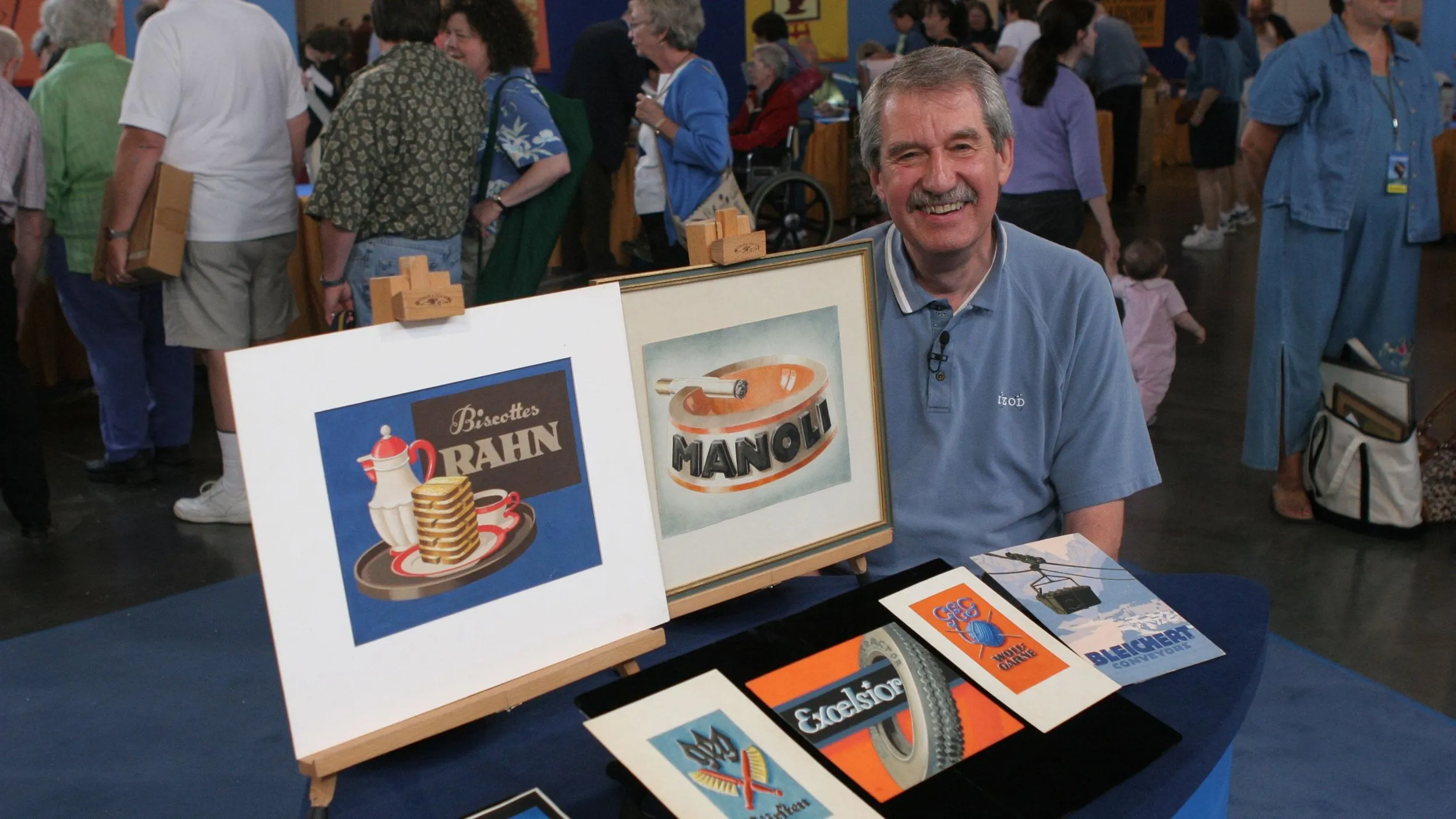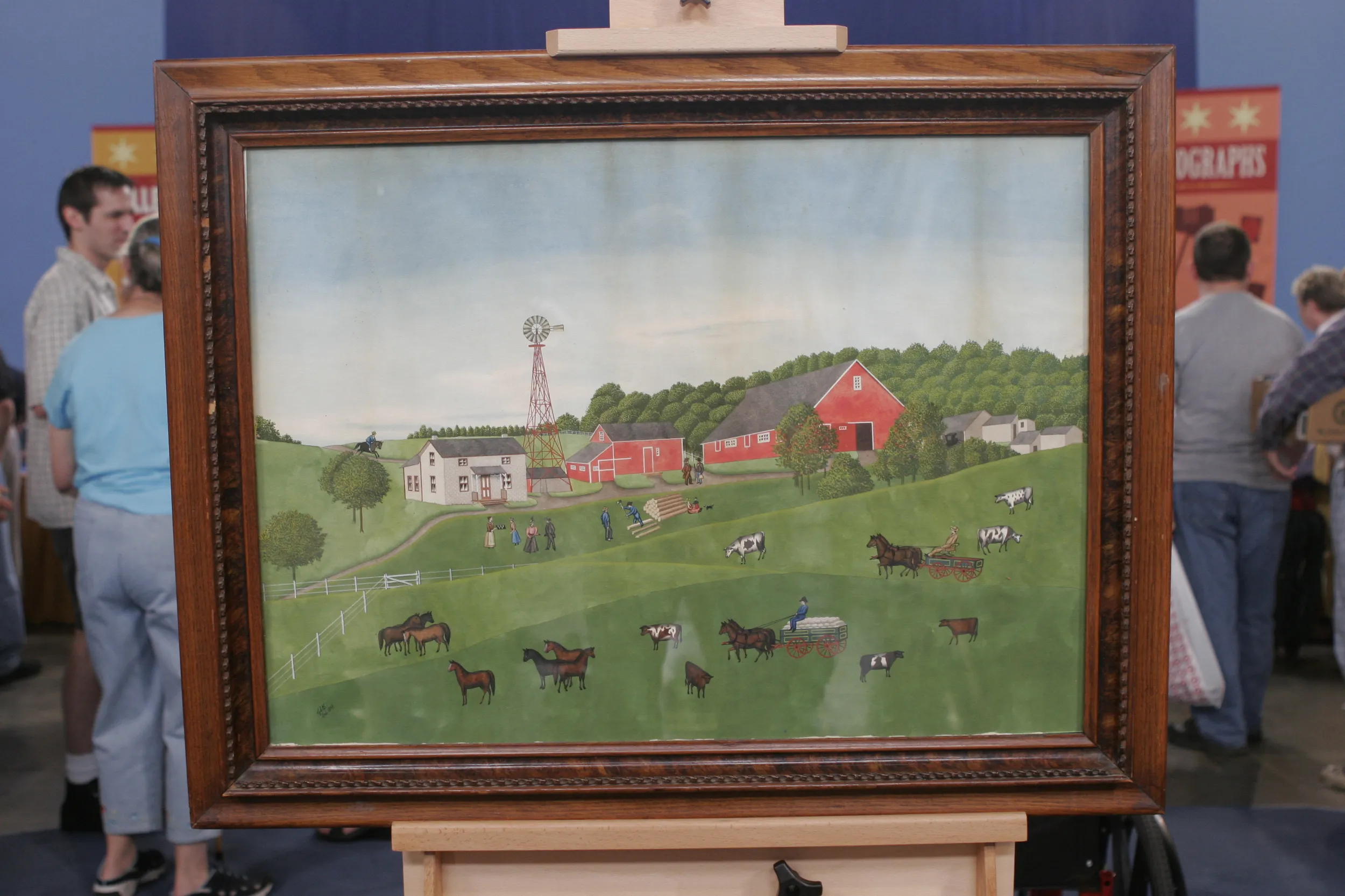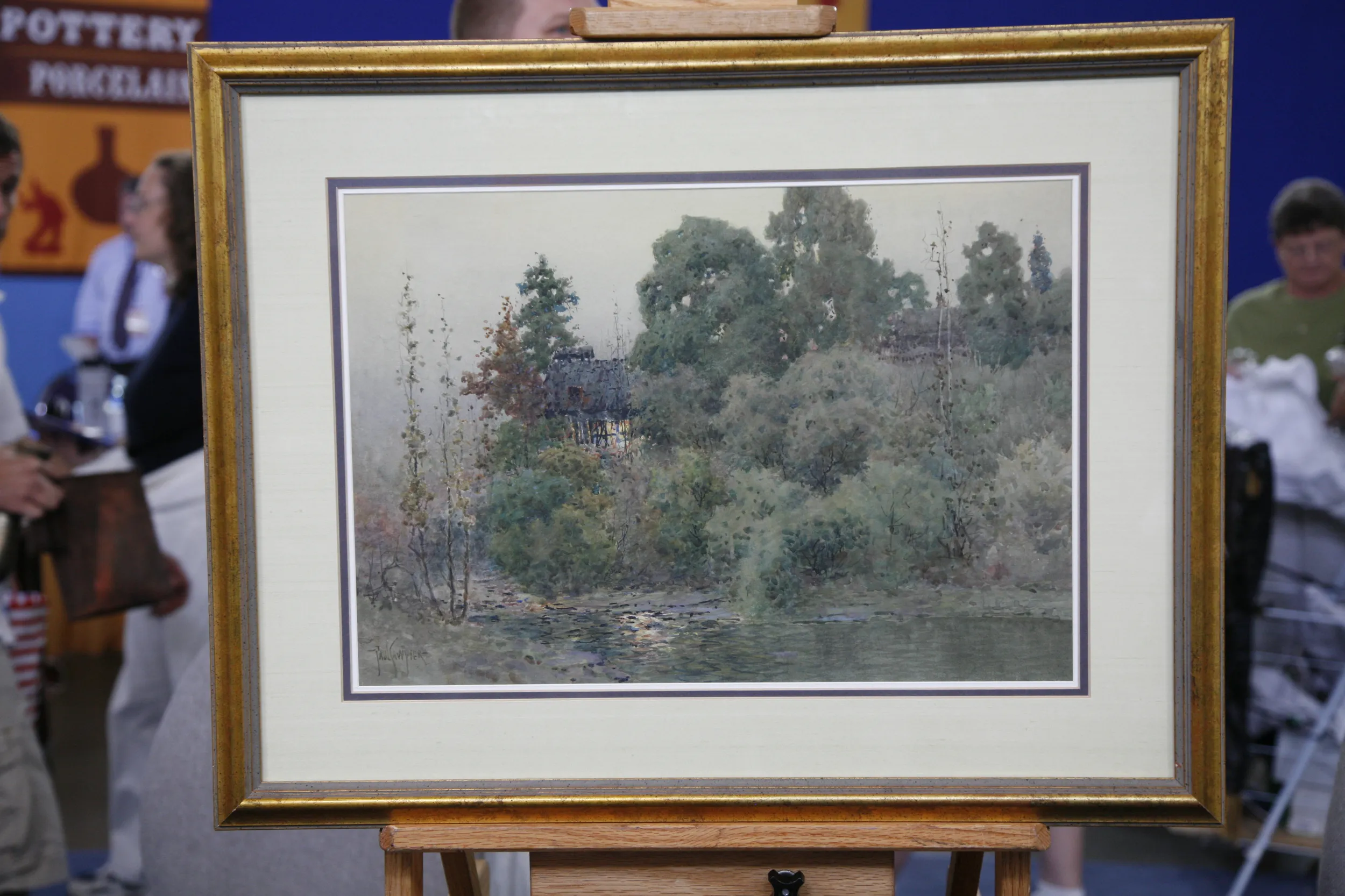APPRAISER: You have an interesting family connection with this artist, I believe.
GUEST: Right, uh, he knew my parents, and he also knew my grandparents. He lived in the same apartment building as my parents.
APPRAISER: And the artist is?
GUEST: Lyonel Feininger. He wrote my parents this letter shortly after I was born.
APPRAISER: It's a very charming letter, and I wonder whether I could ask you just to read, perhaps, the first paragraph of it.
GUEST: Sure, it says, "Dear Valentin, Dear Barbara"-- that's my parents-- "how many times I see the light "shining under the door of your apartment "and hesitate to knock and see how you are. "What is the use of cordial feeling "for someone you know and are very fond of, "if shyness to make an attempt at communication gets in the way and paralyzes the action?"
APPRAISER: It's incredibly poignant.
GUEST: Very sweet letter.
APPRAISER: Very sweet.
GUEST: I sort of have a vision of him writing it.
APPRAISER: Yes. And I see at the end here, he mentions, "Barbara and the baby."
GUEST: Right.
APPRAISER: And the baby would be?
GUEST: That's me.
APPRAISER: These works that are here, how did you come by them?
GUEST: This was a birth gift that he gave to my parents for me. My mother always described him as walking up and ringing the doorbell and saying, "This is for the little one." This is a letter, a note he wrote to my grandmother and her second husband, with one of his woodcuts on it. And this my grandmother had, and I inherited it.
APPRAISER: So it's a very nice group. I think it's interesting. You have the sense of his urban alienation in New York, and he comes across as being such a shy man, when he seems to have been a compulsive joiner. He was associated with many of the most important Modernist groups of the 20th century, particularly in Germany.
GUEST: Hm.
APPRAISER: Although he was born in New York and died in New York, in my mind, I'll always associate him with Germany, and he moved there when he was a teenager. Like many artists in the '30s in Germany who were involved with the Modernist movement, were tarred by Hitler as what they called degenerate artists.
GUEST: Right.
APPRAISER: Entartete Kunst. And as a result of the environment in Germany, that's why he left and came over to the States. And here he was... This would have been what, in the...
GUEST: January of 1954.
APPRAISER: 1954. And he passed away, I think, in 1956. So this was later on in his life. Here's a very typical work, which appears to be one of his seascapes.
GUEST: Right.
APPRAISER: And you can see he's very much under the influence of the Cubists with the way the space is broken up here. And this one, also, is signed, and here we see the date, which is 1950. And a very nice little watercolor, with ink drawing around it, as well. And this one is from a series called the "Ghosties."
GUEST: Right, he did a lot of "Ghosties."
APPRAISER: That's right. And then this one here, as you say, is a woodcut.
GUEST: Right.
APPRAISER: And he's done some hand-coloring on it, too, and this was a Christmas gift. The fact that he's given it hand-coloring is going to add to the value. There's a lot of interest in his work. These are quite late. It tends to be the earlier works from the teens that there's great demand for. But you'd have a great deal of interest in the market for these. This one, at auction, I would say comfortably $15,000 to $25,000.
GUEST: Wow.
APPRAISER: This one here, probably the same figure.
GUEST: Really? Wow.
APPRAISER: $15,000 to $25,000. And for the woodcut, because it's hand-colored, it's going to be around about $5,000 to $8,000.
GUEST Wow, my goodness.
APPRAISER: So it's really a lovely little group.
GUEST It is.
APPRAISER: The letter is terrific provenance. This is the kind of provenance we dream of. We see so many of the fakes of them, and then you brought this letter out. He knew your parents, these were gifts.
GUEST: Right.
APPRAISER: It's just marvelous provenance. And so, all and all, it's going to be $40,000 to $60,000.
GUEST: Wow. That's fabulous. Thank you, very much.











